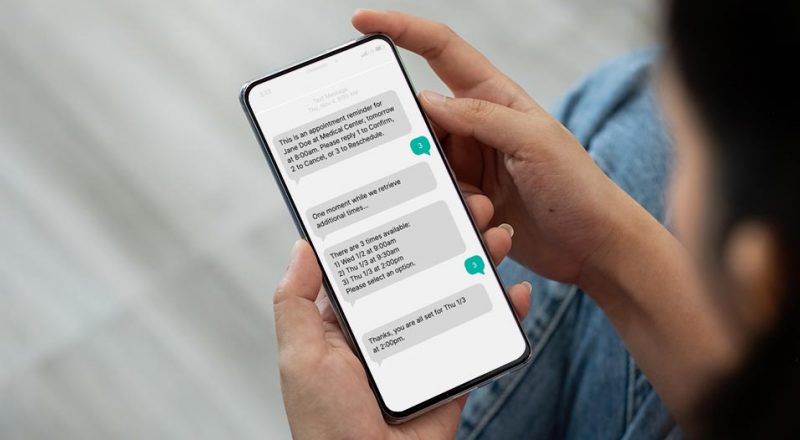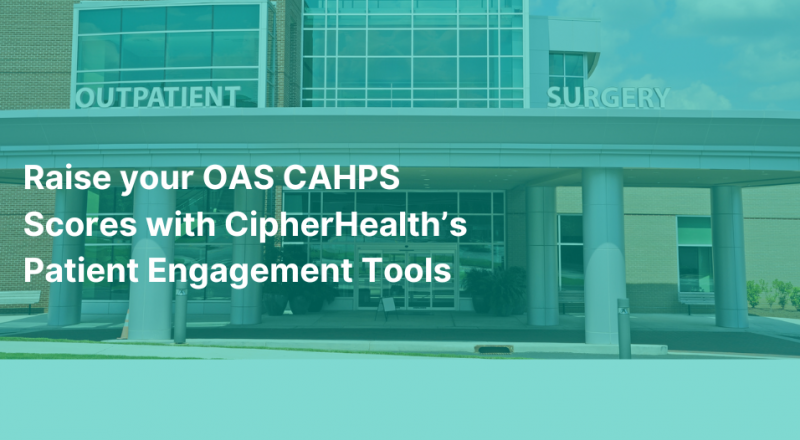The 21st-century patient is easily distracted. Whether it’s family, a job, or the dog, there are so many things that can get in the way of one’s healthcare. Even patients with the best of intentions who genuinely want to do the right thing can sometimes lose focus and forget to show up to that doctor’s appointment that they scheduled two months prior.
That’s why patient appointment reminders are a modern-day necessity for physician practices. While the concept of engaging patients before visits in an effort to reduce no-shows is certainly not new, like most things, applying technology can make this process more cost-effective and help achieve goals that may not otherwise be possible.
Below are some of the benefits of leveraging technology for patient appointment reminders that go beyond reducing no-shows:
1. Empowering Nurses to Work at the Top of Their Licenses
For many physician practices, staff resources are limited and as a result, employees sometimes have to wear many different hats when it comes to job function. Nurses, in particular, often have to take on administrative responsibilities that may fall outside their job description, including appointment scheduling, patient billing, and EMR upkeep, amongst other clerical tasks.
By incorporating technology into patient appointment reminder workflows, clinicians can focus less on trying to reach patients by phone and more on patient care. Appointment reminder platforms enable physician practices to scale their pre-visit outreach efforts by syncing with EMRs or scheduling systems and automatically dispatching timely communications to patients.
Digitizing the patient appointment reminder process helps ensure that valuable staff resources are leveraged most effectively. By relinquishing nurses and other clinical practitioners of time-intensive duties such as manually calling patients to confirm their next appointment, these professionals can work at the top of their licenses, spend more time in the exam room, and see more patients.
2. Optimizing Physician Schedules
Having a high patient no-show rate can be an expensive problem for a healthcare organization, especially for employed physician groups. In addition to lost revenue, missed appointments result in the underutilization of high-salaried staff such as physicians and advanced clinical practitioners. When patients don’t show up, the clock keeps ticking and providers are left to perform tasks for which they are not reimbursed while still collecting a paycheck at the end of the week.
Patient appointment reminder technology helps to address this challenge by making it easier for patients to cancel ahead of time. Most reminder solutions enable providers to prompt patients to confirm their appointments. If a patient presses “2” on the keypad to indicate that they need to cancel their scheduled visit, it gives physician practices enough time to find another patient to fill the open slot. Some platforms also allow patients who wish to cancel to be triaged to front desk staff to reschedule their appointment.
By encouraging patients to cancel rather than not show up to appointments, practices can ensure that they are leveraging their physician staff in the most efficient way possible while increasing access. This is a win-win for both provider organizations and patients in need of care.
3. Improving Care Transitions
Following hospital discharge, it is a common best practice for patients to schedule a follow-up appointment with their PCP or other physicians. These visits are important because they give patients an additional opportunity to ask questions about their discharge instructions as well as enable providers to ascertain if patients are indeed on the path to recovery.
The challenge, though, lies in ensuring that patients actually attend these appointments post-discharge.
The discharge process can be incredibly chaotic and stressful for patients. In a short time period, patients are challenged to absorb a high volume of critical information in order to safely care for themselves at home. When you compound this with all the other things that may be going through the patient’s mind at the time, like how they’re going to get home, who’s going to help them fill prescriptions, and other factors related to Social Determinants of Health it’s easy for follow-up appointments to fall by the wayside.
Appointment reminders help ensure that patients stay on track with their care plans and technology allows organizations to reach 100% of those recently discharged via EMR integration. By increasing the likelihood of patients attending follow-up appointments, healthcare organizations can help improve post-discharge outcomes in terms of lowered readmission and ED recidivism rates.
From optimizing labor utilization to improving patient outcomes, leveraging technology for patient appointment reminders can potentially help generate cost savings for medical groups and health systems. When evaluating patient reminder solutions, it’s important that providers understand the potential benefits beyond reducing no-shows and how these value-adds help achieve key organizational goals.
Patient outreach technology can also be used for more than just appointment reminders. Read this article to learn how provider organizations are using digital outreach tools to achieve organizational initiatives related to population health management and value-based care.








